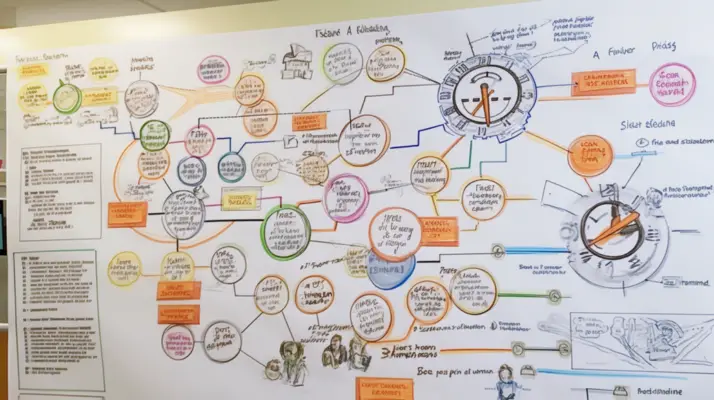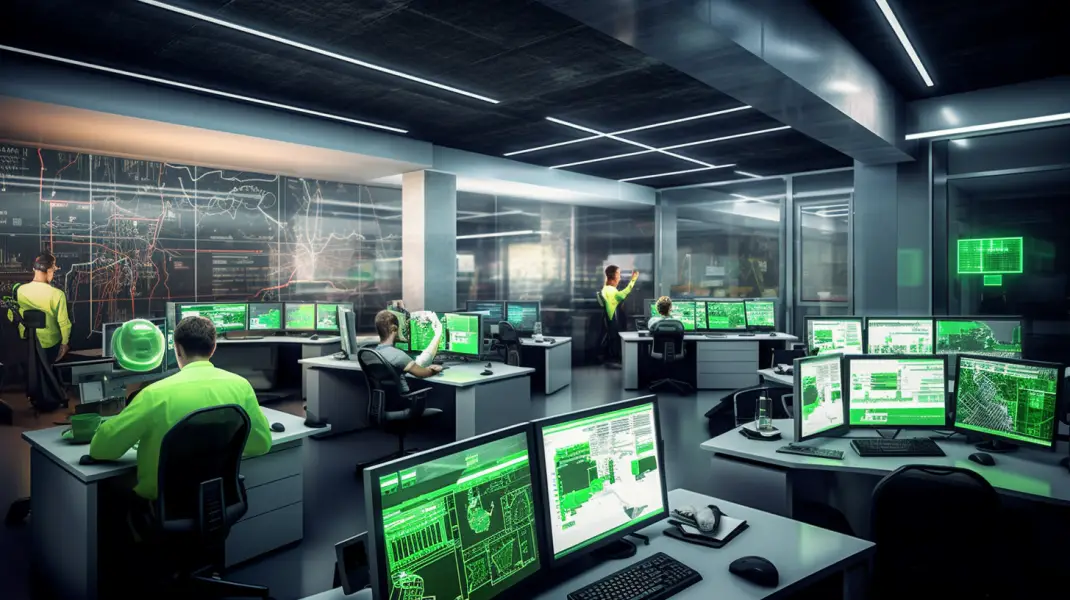Risk management is a critical aspect of construction projects, considering this industry’s inherent uncertainties and complexities. To effectively manage risks, it is essential to identify and assess potential risks, implement risk mitigation strategies, and continuously monitor project progress.
Key Risk Indicators (KRIs) play a vital role in this process by providing valuable insights into the performance and health of a construction project. These indicators serve as quantifiable measurements that help stakeholders understand the level of risk exposure and take appropriate actions to minimize negative impacts.
The construction industry faces risks such as cost overruns, delays, safety hazards, design errors, and contractual disputes. Using KRIs, project managers can proactively identify areas requiring attention or intervention. This enables them to implement effective risk mitigation strategies early on, reducing the likelihood of costly consequences.
This article explores the importance of KRIs in the construction industry and discusses their application in identifying potential risks, implementing mitigation measures, and monitoring project outcomes for improved overall performance.
Through an objective analysis of key risk indicators in the construction sector, this article aims to enhance understanding and facilitate better risk management practices within the industry.

Understanding Risk Management in Construction Projects
Risk management is a crucial aspect of construction projects, requiring a comprehensive understanding to mitigate potential risks and ensure project success effectively.
Risk assessment techniques are key components of risk management in the construction industry. These techniques involve identifying and analyzing potential risks that could impact the project’s objectives and implementing strategies to minimize their likelihood or impact.
Construction risk analysis is an essential tool used in risk assessment. It involves evaluating various factors associated with the construction process that may pose a risk, such as financial uncertainties, safety hazards, regulatory compliance issues, and environmental concerns.
Conducting a thorough analysis, project managers can identify and prioritize the most significant risks based on their potential impact on cost, schedule, quality, and overall project success.
Several methods are commonly employed for construction risk analysis. These include checklists, brainstorming sessions with stakeholders, historical data analysis from similar projects, expert judgment from industry professionals or consultants, simulation models using computer software programs, and scenario-based assessments. Each method offers its own advantages and limitations depending on the nature of the project.
Understanding risk management in construction projects requires a systematic approach that incorporates various risk assessment techniques like construction risk analysis. Employing these techniques effectively during different stages of a project’s lifecycle – planning, design, execution – stakeholders can proactively identify and address potential risks to minimize their adverse impacts on timeframes and budgets while ensuring successful outcomes.
Importance of Key Risk Indicators (KRIs) in the Construction Industry
Efficient monitoring and control mechanisms are crucial for successfully managing potential challenges and uncertainties in the construction sector. To effectively manage risks in the construction industry, it is important to utilize key risk indicators (KRIs).
Kris plays a significant role in identifying, measuring, and mitigating risks associated with construction projects.
One of the ways technology contributes to managing construction industry risks is through real-time data collection and analysis. Advanced technologies such as Building Information Modeling (BIM) allow project managers to monitor various aspects of a construction project, including scheduling, cost estimation, and quality control.
Using technology-driven KRIs, stakeholders can identify potential risks early on and take necessary actions to mitigate them.
Collaboration among project stakeholders is another crucial factor in mitigating construction project risks. Effective communication and coordination between owners, contractors, subcontractors, suppliers, architects, engineers, and other parties involved in a construction project can help identify potential issues or conflicts that may lead to risks.
Collaborative efforts enable sharing of knowledge and expertise, leading to innovative solutions for risk mitigation.
Incorporating technology-driven KRIs and collaboration among project stakeholders are essential for effective risk management in the construction industry.
Utilizing these tools and strategies, organizations can proactively address potential challenges and uncertainties during different construction project phases.
Identifying and Assessing Potential Risks
To effectively manage and mitigate uncertainties in the construction sector, it is imperative to identify and thoroughly assess potential challenges during a project accurately. Risk identification techniques are crucial in this process, enabling project stakeholders to identify and document potential risks proactively.
These techniques involve systematically examining various aspects of the project, such as design, procurement, construction methods, and external factors like weather conditions or regulatory changes. Identifying risks early on, construction professionals can develop strategies to address them before they escalate into costly issues.
Once potential risks have been identified, risk assessment methods can be employed to evaluate their potential impact and likelihood of occurrence. This involves assigning a numerical value or rating to each risk based on severity and probability.
This quantitative approach allows project managers to prioritize risks based on their significance and allocate appropriate resources for mitigation measures.
Various tools are available for risk identification and assessment in the construction industry. These include checklists, brainstorming sessions with relevant stakeholders, historical data analysis from previous similar projects, expert judgment through interviews or surveys with experienced professionals, and simulation techniques using computer models.
Effective risk management in the construction industry relies heavily on accurate identification and thorough assessment of potential risks. Using appropriate risk identification techniques and assessment methods, stakeholders can proactively mitigate uncertainties during construction projects.
Implementing Effective Risk Mitigation Strategies
Effective implementation of risk mitigation strategies is crucial in ensuring the successful completion of construction projects and minimizing potential negative outcomes. Risk mitigation techniques are vital in identifying, evaluating, and managing risks within the construction industry.
Using these strategies, project managers can reduce the likelihood and impact of risks that could disrupt project timelines, increase costs, or compromise safety.
To effectively mitigate risks in the construction industry, project managers should consider the following techniques:
- Risk identification: Conduct thorough risk assessments to identify potential hazards and vulnerabilities associated with specific construction projects.
- Risk analysis: Analyze identified risks by assessing their probability of occurrence and potential consequences on project objectives.
- Risk prioritization: Prioritize identified risks based on their significance level to allocate resources efficiently and focus on critical areas.
- Risk response planning: Develop contingency plans and action steps to address identified risks proactively.
Incorporating these risk mitigation techniques into project management practices, construction companies can enhance their ability to identify and respond to potential threats promptly. This proactive approach allows for better decision-making throughout the project lifecycle, improving overall performance and successful completion.

Monitoring and Evaluating KRIs for Improved Project Outcomes
Monitoring and evaluating key performance indicators (KRIs) in project management allows for assessing project outcomes and facilitates informed decision-making throughout the construction process. Measuring effectiveness and tracking progress are essential components of successful risk mitigation strategies in the construction industry.
To effectively monitor and evaluate KRIs, it is necessary to establish clear objectives and targets at the outset of a project. These objectives should be specific, measurable, attainable, relevant, and time-bound (SMART). Once these objectives have been established, KRIs can be selected and monitored to provide insight into whether these objectives are being met.
A table can enhance the monitoring and evaluation process by visually representing the data collected. This table can include columns for each KRI being tracked and rows representing different time periods or milestones in the project timeline.
Regularly updating this table with new data, project managers can easily track progress over time and identify deviations from expected outcomes.
Monitoring and evaluating KRIs is crucial for measuring effectiveness and tracking progress in construction projects.
Frequently Asked Questions
How do key risk indicators (KRIs) differ from key performance indicators (KPIs) in the construction industry?
Key risk indicators (KRIs) in the construction industry differ from key performance indicators (KPIs) by focusing on identifying and mitigating potential risks. KRIs are crucial in risk management as they provide early warning signs and help in decision-making processes.
What are some common challenges construction companies face when identifying and assessing potential risks?
Common challenges construction companies face in risk identification include lack of data, difficulty in assessing the probability and impact of risks, limited expertise in risk management, and the complex nature of construction projects.
How can construction companies effectively prioritize and allocate resources for risk mitigation strategies?
Effective resource optimization in construction companies can be achieved using various risk assessment techniques. By systematically evaluating and prioritizing risks, organizations can allocate resources strategically to mitigate potential threats and ensure optimal risk management.
What are some best practices for monitoring and evaluating key risk indicators (KRIs) in construction projects?
Monitoring techniques and risk assessment methods are essential for evaluating key risk indicators (KRIs) in construction projects. These practices enable construction companies to prioritize and allocate resources for risk mitigation strategies.
How can construction companies ensure their risk management strategies align with industry regulations and standards?
Ensuring that risk management strategies in construction align with industry regulations and standards is crucial. It involves prioritizing regulatory compliance, integrating risk management into project planning, and regularly reviewing and updating strategies to remain compliant.

Conclusion
The construction industry faces numerous risks that can significantly impact project outcomes.
Using Key Risk Indicators (KRIs) is crucial for effective risk management in construction projects.
Construction professionals can enhance project success rates and minimize financial losses by identifying and assessing potential risks, implementing appropriate mitigation strategies, and continuously monitoring and evaluating KRIs.
Therefore, stakeholders in the construction industry must prioritize developing and utilizing KRIs as a proactive approach to managing risks.

Chris Ekai is a Risk Management expert with over 10 years of experience in the field. He has a Master’s(MSc) degree in Risk Management from University of Portsmouth and is a CPA and Finance professional. He currently works as a Content Manager at Risk Publishing, writing about Enterprise Risk Management, Business Continuity Management and Project Management.

